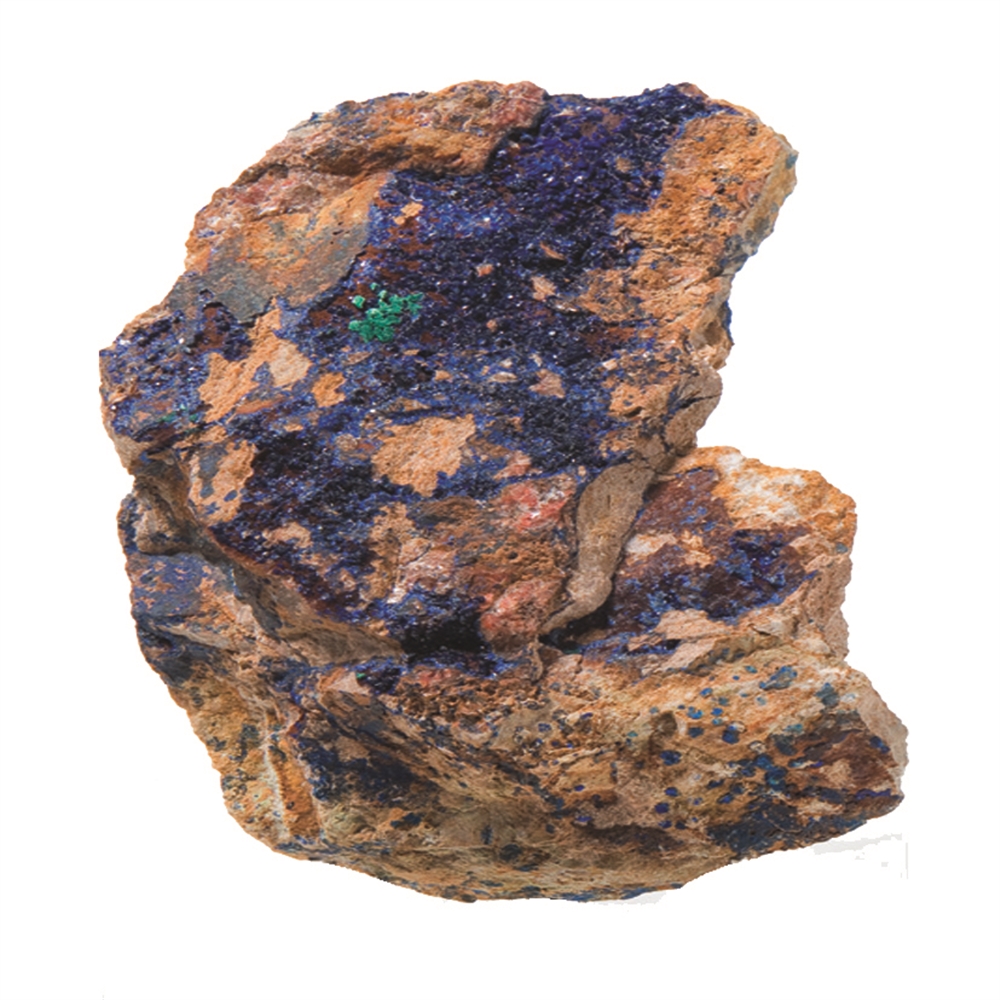More than 3,000 years ago, the ancient Egyptians already used ground Azurite as color pigments for their paintings and, mixed with egg white, to make up the eyes. The use of azurite also has a long tradition in many other regions of the world, e.g., among the indigenous people in the southwest of today's USA and in the Chinese Ming Dynasty (1368 - 1644). In Europe, the mineral was used by Albrecht Dürer and other Renaissance painters. The blue Azurite was mostly used only as a base - the much more expensive Lapis lazuli was used as a top color.
Through contact with oxygen in the air, azurite is gradually transformed into the green mineral malachite - which is why the sky on older paintings sometimes has a distinct green tint. With the invention of "Prussian blue" at the beginning of the 18th century, azurite then lost its importance as a pigment, but is still used today in the restoration of old paintings.
The mineral received its name in 1824 from the French mineralogist Francois Beudant in reference to the color "azure". The Latin word "azzurum" for blue is derived from Persian ("lazaward", i.e. "sky blue") - the French Mediterranean region Cote d'Azur also got its name from this term.
A close relative of the blue Azurite is the bright green Malachite. Depending on the CO2 content of the solution from which the minerals form, malachite or azurite is formed. If the CO2 content changes at a later time, azurite transforms into malachite, but retains its typical crystal form. Mineralogists call this process "pseudomorphosis".
This beautiful collector's specimen of azurite malachite comes from the region of Alnif Oumjrane in the south of Morocco.
Over 40 years on the market + own production in China and Indonesia

